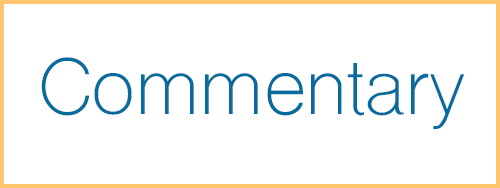Washington Watch is produced by the AACC office of government relations and policy analysis.
For too many low-income children, college is out of reach, for some, out of mind. The pandemic has been particularly brutal on these families. The purpose of the GEAR UP program is to change the mindset of these children and to prepare them and their families for postsecondary education.

GEAR UP is one of the student support programs that is consistently on the list of community colleges’ federal legislative priorities. Community colleges support strengthening GEAR UP as well as TRIO, CCAMPIS, and other programs that help them “meet the needs of diverse, historically underrepresented, and economically disadvantaged students.”
GEAR UP synopsis
The Gaining Early Awareness and Readiness for Undergraduate Programs (GEAR UP) was created by the 1998 reauthorization of the Higher Education Act. It is a competitive discretionary program aimed at increasing the number of sixth- and seventh-grade students in high-poverty areas to attend and succeed in college by providing services to them as well their parents and teachers.
There are two types of GEAR UP grants for state and partnership applicants, both for six or seven year awards. State applications, which include US territories, entail statewide initiatives for a maximum award of $5 million. Partnership applications, which are more locally focused, involving schools, districts, community organizations and postsecondary institutions, can request a maximum of $800 per student to provide services to a designated cohort of students as they continue through high school.
All applicants are required address an absolute priority, which can be met by identifying at last one activity in a minimum of three of four areas. ED does not prescribe either the activities or areas that applicants choose to include in their applications. Examples of activities and areas include: (1) “Providing work-based learning experiences (such as internships, apprenticeships, and fellowships) that align with in-demand industry sectors or occupations;” (2) “Utilizing technology for educational purposes in communities served by rural local educational agencies…or other areas identified as lacking sufficient access to such tools and resources.”
There is a dollar-for-dollar match requirement for both types of applications. State applicants must allocate between 25 and 50 percent of federal funds to activities, with no less than 50 percent of the federal funds to be allocated for scholarships. Partnership grantees may request a waiver for a portion of the matching requirement.
Facts and figures
The Fiscal Year 2021 Omnibus spending and COVID-19 relief bill that was enacted December 2020, appropriated $368 million for GEAR UP. This was $3 million more than for the previous year. In the past decade, about 550,000 students each year have been helped by GEAR UP projects. According to the National Council for Community and Education Partnerships, which provides professional development and technical assistance to GEAR UP awardees, due to the demand for the program, this amount of funds enables only a small fraction of eligible students to participate.
Assessing value of text-based advising
To achieve their goals, GEAR UP awardees rely heavily on evidence-based practices. Over the years, GEAR UP programs have been evaluated at national, state (e.g., Oregon, South Dakota, and Washington) and institutional or district levels. These evaluations that contrast GEAR UP students with comparable control groups include quantitative and qualitative measures. The former track the number of students who availed themselves of certain services, took classes of increasing rigor of instruction, completed FAFSA, took college admission tests, enrolled in college, and some even post-college outcomes. Qualitative measures include capturing whether and the extent to which GEAR UP students experienced raised awareness of postsecondary options as well as expectations of college going.
But how effective is one specific intervention, text-based advising, to counter summer melt for high school graduates and to promote retention for first year college students? The findings of the Department of Education’s assessment of text-based advising are reported here.
The study involved about 4,800 GEAR UP high school seniors across the country, who intended to attend college. They were randomly divided into two groups. The treatment or intervention group received, in addition to the regular GEAR UP supports, text messaging designed to support a successful transition to college. The other or control group only received regular GEAR UP supports in the summer before and during their first year of college.
The key finding showed that unfortunately, students who were sent text messages about transitioning to college were no more likely than other students to enroll or persist in college. The texts were sent as planned and students responded to the messages. So, it was surmised that the two factors that contributed to the finding is that students in both groups were already informed about college and the the message sent by the advisors was rather generic.
Status of FY 2021 awards
According to ED’s GEAR UP website, the fiscal year 2021 notice for both the state and partnership applications “is currently going through Department Clearance.”
Furthermore, the GEAR UP Pre-Application Technical Assistance workshops, which were scheduled for February 3-5, 2021, have been postponed but expected to be re-scheduled in the coming weeks. Stay tuned for news of application notices and workshop schedules.




